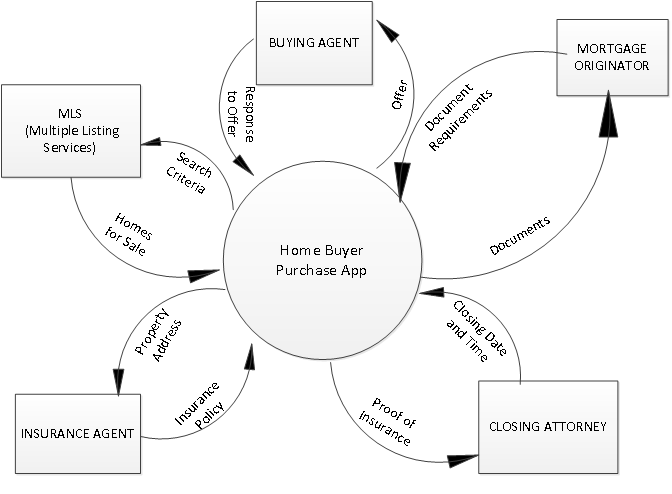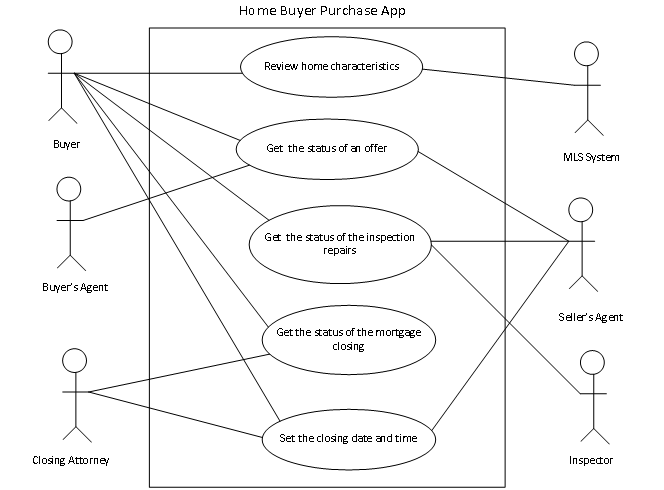When you start a project, the first question needs to be about scope. Analysis helps facilitate discussions, using visual analysis techniques, to clarify the scope of the product or solution. Because scope management is critical to project performance, you want to have proven ways in which analysis prevents scope creep.
There are many tools and techniques you can use to help define, document, and facilitate scope definition to help stakeholders envision what it is they want. At the beginning, or when you are first assigned the project, start with defining the scope. If the scope has already been defined, confirm it.
Three Techniques to Prevent Scope Creep
Scope Creep Top Analysis Tools
Here are three popular business analysis techniques for getting your stakeholders to agree on scope and stick to it!
1. Context Diagram
The context diagram is a well-established technique used to develop a clear understanding of a solution or product scope. The context diagram and its associated analysis provide a very structured approach to asking questions that help stakeholders determine the boundaries of their request.
The context diagram shows the solution or product as a circle in the center of the diagram. It does not show any detail inside the solution, because these details are not yet known. Instead, it shows the outside forces which will be important for the solution. The idea is that if you understand everything that is outside the scope but has an impact on the scope, by definition, you have defined the scope.
Diagram 1 is an example of context diagram for a new product; (possibly a mobile app) to help home buyers complete many tasks to purchase a home. The goal of this app is to help the buyer navigate the work by providing a checklist of items to be done. The circle in the center of the diagram is the mobile app, our solution. The boxes represent the parties, organizations, or systems with which the new app will interact, outside the scope. The arrows represent data flows showing information that will flow to and from the app. For example, the app will send information to the Buying Agent (e.g., the offer) and the Buying Agent will send information to the app (e.g., response to the offer). As you can see, this is a very simple view of the product scope which quickly reveals important information about the complexity and boundaries of the product.
Diagram 1: Context Diagram

2. Use Case Diagram
A Case Diagram is a software development technique. It provides a high-level view of the scope of a solution. This approach helps you have conversations with your stakeholders about the roles of people involved in the solution and the goals. In diagram 2, the rectangle in the center represents your solution boundary /scope. The stick people are actors or parties that have a connection to the solution. The oval is the very high-level descriptions (use cases) of what the solution features and are considered goals of the actor. The lines are called association lines and they show how the actors are involved. Diagram 2: Use Case Diagram
3. Product Backlog List
The product backlog is like a wish list for stakeholders. Its’ purpose is to ask stakeholders what features and functionality they want. From the product backlog list, you can analyze and prioritization the work to determine what is in and out of scope (see diagram 3). You might consider a phased approach, releasing the top ideas in the first phase and the next priorities in a second release. It can be difficult to get stakeholders to define what are the most important things they need. It also requires a clear understand of the business value and estimated cost of each requirement. Continue to focus on facilitating good conversations with stakeholders to define the scope. Diagram 3: Product Backlog List
The Value of Scope Analysis Techniques
There are several advantages to using business analysis techniques for scoping:- Anyone can use them: project managers, systems analysts, or developers.
- Helps formulate questions for stakeholders.
- Facilitates discussion to identify roles and role changes
- Enables collaboration with stakeholders and helps ensure that everyone agrees to the scope of the solution.
- Shows the high-level functions included in scope.
- Helps get scope to a more manageable size and deliver more quickly.
RMC’s Got You Covered
RMC has several skill building courses to help you learn more about scope. There is our Managing Small Projects eLearning class where you can learn how to scope a small project. Our Business Analysis Fundamentals eLearning class covers more about these three techniques and others. Defining and Managing Project Requirements course offers high level of scoping. Contact us for more details on our instructor-led class schedule. Finally, you can also listen to the recorded webinar Three Proven Analysis Tools to Prevent Scope Creep and earn 1 technical PDU. Sources: https://www.pmi.org/learning/library/top-five-causes-scope-creep-6675- Satisfying Stakeholders with Agile Requirements - January 25, 2023
- Business Analysis: The Best Way to Start a Project - March 2, 2022
- Three Proven Ways Analysis Prevents Scope Creep - December 29, 2021






